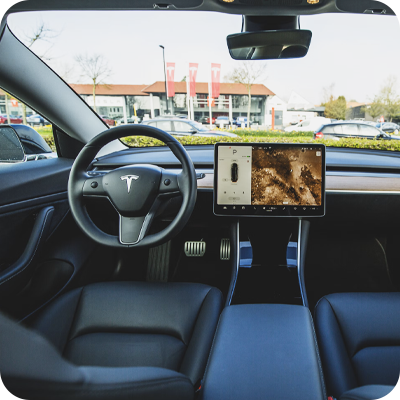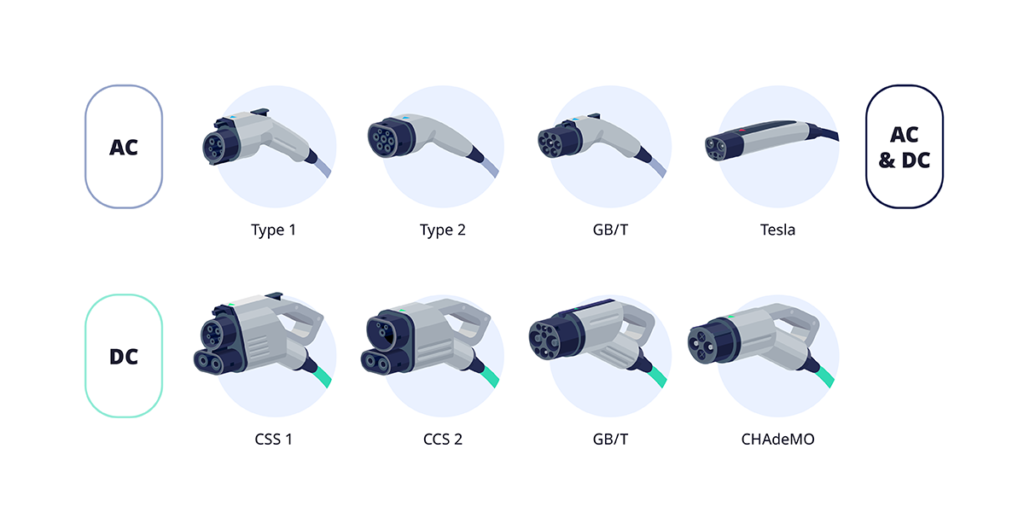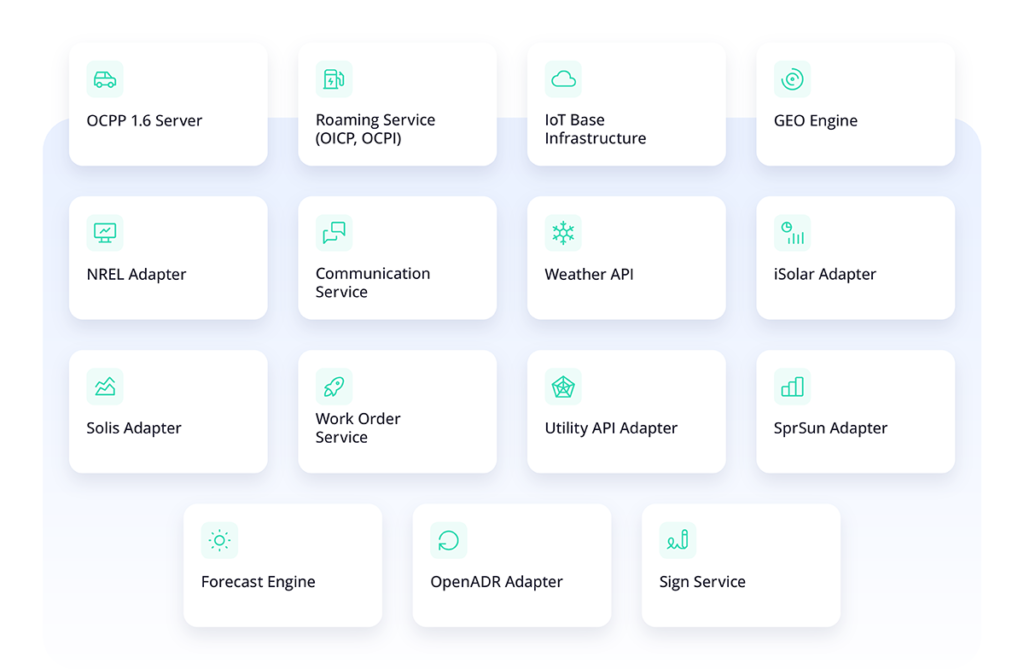Electric vehicle charging – what do EV car owners struggle with?
The problems and pressures associated with guiding society towards relying on electricity rather than fossil fuels are significant. The inconsistency in the ability to pay for EV energy purchases is frustrating. Some systems are not clearly identified as to function and charge ability.
It can take “forever” to charge if the wrong charging method is selected, which is particularly frustrating with a car full of kids as one tries to manage their vacation and try to negotiate unfamiliar charging systems. Worst of all, is the careless approach to pricing where consumers face stunningly different rates based on the supplier rather than the actual kWh obtained…
TESLA shows what a great CX looks like
If you want it to be magnificent, think like a customer when designing. Banish wrong-headed biases and notions like “old people are incompetent” and instead think “all customers may struggle with a new experience”, irrespective of age, so design thoughtfully!
TESLA is a great example. They’ve leveraged their digital design and software extraordinarily well, primarily because they have had years of lead-time over their competitors, and have dealt with and eliminated most of the problems already.

In a JD Powers study of User EV Experience, the TESLA Supercharger stations won hands down, but their Level 2 Destination chargers also beat out the competition, too. It goes further than that, however, because of the seamless support experienced by TESLA owners.
The TESLA owner sets out on every journey with vital information at their fingertips. They know how far to the nearest available chargers; how much energy remains in the battery; the current range of the vehicle.
Suppose it is time to seek a charger. In that case, the system automatically preheats the battery as it approaches the charging point, to make sure it is ready to receive charge in the most efficient way possible. And when a vehicle has completed its electric vehicle charging cycle, it tells the owner to clear the way so this new customer can use the charger.
Once they arrive and connect the plug and charge system, it completes a digital handshake between the system and the vehicle, arranges payment, and charging begins. It should be that easy for everyone.
So, you’re not TESLA—that’s okay—there are ways for everyone to streamline the CX. The UK and EU charging markets are evolving well with systems like PAUA that connect 70+ operators into a network for heavy/regular users, occasional drivers, or fleet operations.
Six tips to improve the EV charging experience
1. Make sure you offer a fast charging speed
Need for Speed is not just a video game—it’s a perceived essential for EV users. Chargers have different capabilities, usually described as Level 1, 2, and 3 by the Environmental and Energy Study Institute, but there are variations even among levels.
Level 1 is an electric car charger typically found in home charging units and is the sort that comes “stock” with most vehicles. It offers slow charging of ~1.4 kW/hour, taking up to 40 hours (spread over several days) to reach full charge. While slow, it is suitable for most users who never approach the limit of their range in an EV.
Level 2 is a 240-volt charger that provides between 3 and 20 kW/hour (usually 6) which can put 20-25 miles of range into a vehicle in just an hour. For heavy users and long-distance commuters, an overnight charge can provide 200 miles of driving.
These (usually aftermarket) chargers are more expensive than Level 1 charging systems. Yet, they can use something as simple as an electric clothes dryer type connection for power which is a common, straightforward connection. Level 2 connectors use the SAE J1772 type of connector which can support charging up to 19.2 kW.
Level 3 electric car chargers, aka DC chargers, can bring a battery up to 80% charge in just 30 minutes. They can manage 50 kW (but occasionally just 20kW).

2. Ensure that your clients experience charging continuity
Limitations on the perceived ability to charge away from home discourage some potential buyers of EVs. Charging at home can be impossible for those in apartment buildings or those on longer journeys for vacation or work. They must rely on the available charging network(s).
Without good integration from multiple providers and inter-network support, people find themselves relying on chargers at shopping malls or individual suppliers wherever they happen upon a space to charge. In such cases, they can be subject to “overstay fees” if they park at 6 p.m., finishing charging in a few hours, and don’t pick up their car until 7 a.m. the next day.
For the best EV charging experience, incorporate spot reservations for customers before they arrive. Now they are secure in the knowledge that they have a spot so they won’t have to settle for one that is miles away. Taking an UBER or XoooX to get home puts a serious dent in the savings from owning an EV!
3. Ensure electric vehicle connectors compatibility
Different vehicles require different connectors, and though they may look the same, they work differently. These four are typical, and some look the same but behave quite differently.

For example, though the Type 2 AC chargers are capable of 7-43 kW, they won’t deliver that kind of power if the onboard charger is limited to 3.3 kW. If a customer plugs in for an hour, expecting to get enough to drive home, they may be disappointed only getting 4 kW instead of the expected 43 kW!
It’s not uncommon for new users to try and connect their car to an incompatible electric vehicle charger. This can be stressful, particularly if the plug or socket is damaged, or the connector becomes jammed and cannot be detached. Getting them to the right charger in the first place reduces this problem.
In Europe, the various charging points and their capabilities are revealed on the Zap Map app, which is a good model to follow for your own design. There is clearly no shortage of chargers with <2% EV usage in the UK now. That number is destined to grow significantly, so the map reveals providers by color, how many spots are available, and what type of electric vehicle connectors exist, when clicked on.
If you provide a thoughtful service, you offer an app that does all these things. It should also automatically remove disabled “out-of-order” chargers from the inventory, and allow users to remove incompatible results from the map.
4. Offering Omnichannel payment facilities
Consistency for users is important, and that can be achieved by utilizing omnichannel payment facilities. Customers need to be able to choose their payment method for electric vehicle charging (EVC) facilities. Let’s face it: not all customers want to be enrolled in a network. Some people drive an EV for their employer, and have no need for their own account. Customers may want the flexibility to be able to pay by credit card, an e-wallet, or a different solution.
Omnichannel payments can make it happen by combining proximity and online payments. This will manage both close and open loop acceptance with a very small impact on time or convenience. By choice, drivers will gravitate towards EVC networks that provide the most frictionless customer experience and the most competitive prices.
For CPOs, the omnichannel system needs to guarantee payments, aggregated data reporting, reliable payment mechanisms, as well as financial reporting. EVC network operators need to know they’re getting paid appropriately. Similarly, EV clients need to have consolidated billing so they know what they’ve spent, and where.
For efficiency, the Payment Services Directive (PSD2) and Open Banking need to be unified. Providing the kiosk-like infrastructure becomes more complicated when there continues to be variegated payment standards. In some cases, cellular connectivity is a problem so there must be alternative payment methods available, even if it is just a digital key. Consolidation, standardization, and collaboration all lead to simplicity and boost the confidence of potential EV buyers.
5. Enabling in-car payments
Paying can’t be a barrier. One popular solution is the Radio Frequency Identification (RFID) card that identifies the user to a specific network, but without the need of an actual over-the-air connection. Similarly, QR codes on a charging station can be used by anyone with a smartphone, even if they don’t have an account. Just follow the screen prompts, provide a payment method, and the session is ready to go.
Of course, the mobile phone itself often has NFC (Near Field Communication) that allows one to tap it on the terminal, just like an ATM card or credit card. As with any credit card session (including QR codes), you would see a hold on the credit card, for the average amount of a charging session, which will be removed after the payment is completed.
Using a Bluetooth connection from the EV identifies any vehicle uniquely, transmits billing information securely, and gets the session underway quickly—just what a customer is looking for.

6. Provide plug and charge
Identity should be easy to establish so that e-roaming becomes a “charge anyplace, anytime, anywhere” experience. It should not be affected by township, city, or even country. Such a system can be complex; there are deals to be made, negotiation to complete, all to make such a system work. As an example, how are taxes in different jurisdictions applied? A fleet operator that receives a VAT refund of 20% in Britain may not be able to claim it in France, representing a 20% increase in cost to them. We need coordination.
An EV owner can plan a route that keeps them within their own network that they are familiar with, know the rates they can expect to pay, and eliminate surprises, but CPOs stand to improve the utilization of their network when they integrate fully with the others. It’s all about convenience!
What the customer should see for the “charge outside of their network” is simply a line item on the monthly bill showing the time, place, and amount. They should not receive multiple bills from different providers, which can increase the chance of erroneous duplication of charges.
Electric vehicle charging has a massive effect on CX
It is important to work with local governments and industry to eliminate any potential random pricing schemes. The industry needs to tie rates to local utility rates plus a network membership fee, or the utility rate plus a non-member fee. Meeting client expectations, allowing them to charge virtually anywhere, eliminating the suspicion that they are overpaying, and providing consistency to their experience will increase adoption, and increase your customer base.
The best way to make sure you offer a great EV charging experience, and have a clear view of all the processes, is using an all-in-one solution to ensure more efficient management of your EV charging infrastructure.
That is why it’s worth consulting with Codibly to stay apprised of the changes happening industry-wide. At Codibly, we have years of experience in software development, and the EV industry is one of our specialties. Learn more about the microservices we offer to find out how we can help you cut the time of development while building your own solution.






